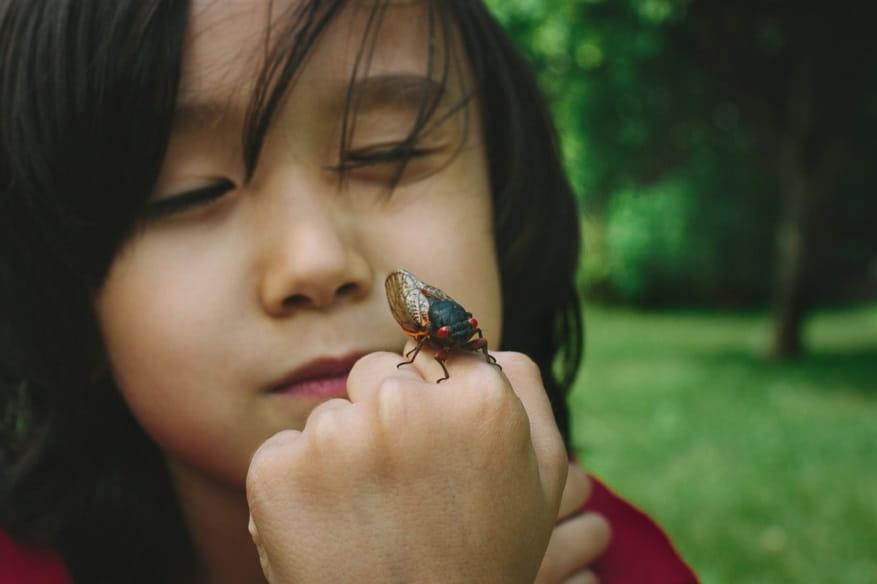Six-Legged Creatures Make Great Teachers! 8 Ideas for Buggy Fun

Whether your child is a bug lover or an insectophobe, there’s a reason to nourish their curiosity about cute little crawlies. Insects are a great way to teach children about science and respect for the natural world. (In fact, our three- and four-year-olds spend a month learning about spiders and insects each spring.)
Plus, bugs are everywhere! You just have to take time to look. Here’s how to make a bug lover out of your own little explorers.
1. Treat Your Child to Bugs that Teach
Introducing your child to non-threatening versions of insects can excite curiosity (and reduce fears). Insect Lore has terrific and inexpensive toys that show what butterflies, ladybugs, bees, and ants look like as they move through their life cycles. This is a great way to build vocabulary words such as metamorphosis and chrysalis!
2. Read Bug Books
Sweet books like The Very Busy Spider or The Very Quiet Cricket show the wonders of the insect world in a positive light.
3. Learn Your Local Bugs
There are over 1 million known species of insects and spiders in the world, and the handy “BugFinder” on insectidentification.org can help you learn what some common ones are. By entering simple information, like the state where you live and the bug’s color, you can figure out, whether that dragonfly is an Eastern Pondhawk or a Widow Skimmer.
4. Go on an Insect Hunt
With a magnifying glass and an insect net, you can take your child on an adventure through your back yard or at a local field or wooded area. This is a great way to combine the fun of a scavenger hunt while also encouraging your child to use his powers of observation: Look for bugs on stalks, under leaves, or carefully lift rocks. You can even carefully place some of the bugs you caught in a see-through jar so you can watch the bug for a few minutes before releasing it.
5. But Make Sure You Teach Bug Safety
This is also a chance to teach about bugs that are harmless and those we have to be more careful around, like wasps and yellow jackets. Teach children to calmly move away from bees, wasps, and other stinging insects. (Bees and wasps sting defensively, and swatting or flailing your arms around can actually provoke a sting!) Depending on where you live, you’ll want to also educate kids about your notorious pests like ticks, like fire ants or brown recluse spiders.
6. Model Bug Positivity
In children, the source of many bug fears are…. adults. If you react with fear and stress when you see a fat bumblebee on sunflower, your children will, too. While some bugs, such as wasps and yellow jackets and do merit caution, most are 100 percent harmless. Without bugs, there would be no life on Earth. That’s pretty amazing.
7. Try to See the Insect World Through Your Child’s Eyes—and Get Excited with Them
Some of the more striking species such as moths and butterflies and praying mantis can nourish your child’s curiosity—especially if you talk about them. Point out cool insects with enthusiasm.
8. Have Patience
If your child is one of those who doesn’t love bugs, don’t try to force him to confront his or her fears by making him hold or touch a bug. Help your child see bugs in a new light: Allow your child to move away from the big at a comfortable distance—and then to tell him about the wonderful things the bug can do.
If there’s a spider around, you can sing "Itsy, Bitsy Spider," or tell your child that the moth that’s swooping around thinks his or her shirt is a great color.
And many kids love bug fun facts:
- While gathering food, a bee may fly up to 60 miles in one day.
- Ants can lift and carry more than 50 times their own weight.
- Houseflies find sugar with their feet.





